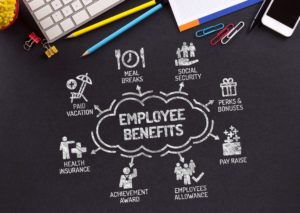
It is time for Leap Solutions’ annual staff “Pond Picks:” our wishes, recommendations, and commitments to you—our loyal clients, associates, and friends—for making 2020 a year of ________. (Customized fill in the blank)

Our Staff Picks in the 2020 Annual Year-End Newsletter will cover:
- 2020, The Year that was ______!
- Staying Positive During a Time of Transition
- The Year was 1995
- Learned Appreciation Even in a Pandemic Time
- Benefits Employees are Looking for in 2021
- Why I’m Optimistic about 2021!
- Your 2021 Productivity Vision
- Avoiding the Squirrel
2020, The Year that was ______!
2020 has surpassed the number of adjectives I can even consider thinking about using. Although in theory with shelter in place and working from home, one could think it was a time to slow down, rest, and recover from the crazy lives that we all lead. Well for us here in Santa Rosa, I clearly got more than my fair share with two more fires, (2017 big and scary-2019 scary-2020 x 2 big but not as close to my house) a pandemic (first in a hundred years), an election with the magnitude yet to be fully felt, and death in my immediate family. Whew, a pretty crazy year I would say!
Even with all described above, I am surely thankful to those around me, specifically my wife, kids, business partner, and colleagues here at the worldwide headquarters of Leap Solutions. We have been very fortunate to support our clients through a huge variety of complex problems this year, specifically with the pandemic, business operations, and planning. I know personally that I had to quickly become an expert in the CARES Act, then moved right into PPP loans, and then continued sorting through furloughs, layoffs, and any other Covid related activity one can imagine. (too many to mention) All in all, Leap had a fantastic year with fantastic staff working with fantastic clients!
Everyone say “goodbye” to 2020 and let’s ring in a better year to come!
Happy Holidays
Chuck McPherson, Partner

Staying Positive During a Time of Transition
Throughout life, we continuously go through transitions. Whether it be small or large, transitions can be difficult. When encountering something new in our lives it can often be scary, stressful, and overwhelming, but if you tackle the situation in a positive way it can help make the transition easier. It is important to remember that you aren’t alone, new challenges only make you stronger, and times of transition are typically temporary.
Make sure to give yourself mental breaks. You can’t spend every waking moment thinking about your latest challenge. Tell yourself when you wake up that you will give yourself time to brainstorm your next step towards completing your transition, and then, give your mind a break. Take the time to do something you enjoy and that brings you happiness. For me, I love crafting, playing with my dogs, drinking wine, and talking to my closest friends on the phone.
Merry Christmas
Cassie Forman, Office Assistant

The Year was 1995
The year was 1995, I was a new executive, and began a long career of coaching leaders and emerging leaders. It was also the year I finished a hardcover book, “Love in the Time of Cholera”. Fast forward to 2020, I am now reading books electronically and coaching by Zoom during COVID-19.
Having shifted to the virtual coaching world, how different is it to coach online? Coaching others requires work to inspire, engage, and motivate individuals, increasing their creativity and helping them establish goals with accountability and outcomes. Coaching requires working with individuals and teams to encourage discussion regarding an issue, strength, concern, or problem. Framing the question, “What keeps you up at night”, then listening and guiding them toward a solution.
Face-to-face coaching gives you a feeling of being connected. We exchange information, note verbal and non-verbal cues, and interact with one another. Noticing and understanding these visual cues makes you a better coach. Learning the importance of an individual or team culture helps provide a safe environment where voices can be heard and acknowledged.
Studies suggest that 93% of one’s communication is non-verbal, watching, and observing the non-verbal cues allows you to gauge the coachee’s interest or understanding. Building trust is important and challenging over text or email. Trust is built face-to-face while providing a friendly environment for the individual to feel safe and boost their success.
So back to the question, how different is online coaching?
As coaches, we acknowledge this is a new era and overcome challenges to move into the digital community, one which will continue well into the future. With the advancement of personal computers, the internet, and cell phones, communications are different for many, yet at the same time familiar to others. Coaching individuals who feel isolated professionally and/or socially are encouraged to acknowledge the overwhelming feeling of being disconnected from colleagues and/or the company. We create a socializing experience to help people feel confident about video communications. As with in-person coaching, active listening skills are required to convey a message that reflects information and empathy that facilitates a discussion that brings out the best in the individual or team. Zoom, Microsoft Teams, or other online venues are the best alternatives to in-person communication. As coaches, we facilitate the feeling of “presence” to engage the individual and support their creativity. While we are not sure of the future, video conferencing will continue to be a part of our daily and weekly interactions allowing us to be face-to-face, be present, and engaged regardless of our physical location.
Remote video meetings and coaching is the new business model. As coaches, we work to design a new coaching experience that emulates in-person coaching that individuals and teams are confident that their objectives will be met.
Virtual Warm Holiday Wishes
Judy Coffey, Senior Consultant, Leadership Coach and Mentor

Learned Appreciation Even in a Pandemic Time
For most of our lives, we have rushed always on the move, doing one thing then moving to the next thing. As a result, we take many things for granted including health, life, freedom, job, school, family, friends, traveling, and more.
While 2020 has been a challenging year, there are many things we have learned to appreciate. The most important thing I learned during this complicated year was to appreciate the little and simple things of life. I appreciate the small miracles that occur around me all the time and focus on the amazing aspects of people and situations.
Life is a miracle and being alive today and every new day is a precious gift. Today we appreciate being alive, family, job, friends, people around us, our house, and having food on the table to provide for our family. We appreciate technology, as it is the new way to be close to our friends and family and going to the park with our kids to give them a moment and a place to play away from their confining life. We appreciate our freedom today more than ever.
Today, being healthy is having all we need to appreciate and enjoy every day, every moment, our family, every smile, a cup of coffee, a sunny day, one song, dancing at home, cooking, hugging and kissing our kids, and even watching them jump on the sofas or running around the house. As long as we are alive and healthy, nothing else matters.
This quarantine has made me appreciate and think about and reflect on lots of things. I hope that you can do the same in your time at home. Take a moment to stop and think about things that really matter in your life.
Feliz Navida y Próspero Año Nuevo!
Maria Albor, Human Resources Associate

Benefits Employees are Looking for in 2021
What a difference a year can make! My decision to Leap back to Leap Solutions in 2019 was the flexibility they offered. Then the pandemic hit and caused businesses to become agile and flexible in order to survive! Employees were “forced” to work remotely to safely distance and to become teachers to their school-aged kids who could no longer physically go to school. Employees began working strange hours to get their work done and meet their family obligations.
With added stresses at home, employees are looking at their benefit packages to see if they are meeting the changing environment. A new survey by Prudential Insurance found that 52% of employees surveyed would leave their job for one with the “right” benefits. Health, dental, vision, and disability insurance remain a top priority but employees also want critical illness and cancer coverage with increased paid sick leave for workers with COVID-19.
Working from home, employees may feel they never get away from work so many want more time off. Even if they cannot go somewhere, they want the ability to shut it all off for some self-care. Mental health benefits have also become increasingly important. Implementing an employee assistance program (EAP) is an inexpensive way to support your employees who are struggling with anxiety, depression, and other mental health issues.
And when employees do return to the workplace, they want to know they are returning to a safe and healthy environment. We recommend having a COVID-19 Prevention Plan which outlines your overall response to the pandemic outbreak. Stay healthy and safe as we close a very trying 2020 and welcome 2021!
Christmas Joy to All
Tracy Emmerich, Human Resources Consultant

Why I’m Optimistic about 2021!
I was born into an Italian-American family in Northern California back in the late 1970s. We had a ritual of Sunday family dinners and holiday meals that lasted for hours with debates over politics, food, family, and friends. We had typewriters and rotary dial phones, we pretended to be “bionic” and were annoyed by siblings during road trips because we had “nothing” to do. We waited until Saturday for cartoons, lived in a world without Darth Vader, and moved the antenna for better reception.
Fast forward to 2019…fast food joints are on every corner, Door Dash is a thing, and keeping our eye on the prize with long work hours takes us away from our families. We all own personal computers, phones have evolved right before our eyes, we spend hours “liking” and “hearting” pictures and stories. We text while standing in line at the grocery store, waiting to see the doctor, or driving in the car all while not knowing where the time goes.
And then in 2020, we had a moment where we had to stop, look, and listen like when you learned to cross the street as a kid.
It’s during this time of the year that I have awakened to what this past year has taught me. For me, this year has brought me back to simpler times. A time to reflect. A time to cherish. While I may not revert to my rotary phone and typewriter, it is my vision in 2021 to be sickeningly grateful, maddeningly work to help my friends and family win, vigorously do less but be better, and present every day!
Wishing you a wonderful, cheerful Holiday Season and a very Happy New Year!
Jen Chelini, Executive Search Consultant

Your 2021 Productivity Vision
2020 has been a challenging year for all of us yet we have all thrived and done our best to stay focused and productive through this ambiguous time. There were times we all questioned how productive we are while at home in our PJs, homeschooling, and Zooming away. For 2021, I invite you to start off your year by creating your productivity vision. This exercise comes from the book, “Free to Focus: A Total Productivity System to Achieve More by Doing Less” by Michael Hyatt. The purpose of the productivity exercise is to create a clear vision of what you want your productivity to look like and feel like in 2021.
Productivity is described as a behavior; hence, we can change and modify our behavior at any time. We assume that if we are not always productive then we are not doing well, we are not doing our job, or fulfilling our responsibilities. We all, at least I do, love to collect tools, tricks, hacks, tactics, apps, and books on productivity. But what if we changed our perception of productivity? What if we changed our vision of productivity?
When you start your journey towards your ideal destination it is more likely that you will stay on track if you have a clear direction and know where you are going. The productivity vision is a way for you to get crystal clear on what you want your life to look like and why this is important to you.
- You start by defining what your productivity ideal looks like;
- You break it down into powerful memorable words that will keep you focused; and
- You list why this is important to you and what is at stake.
For example, here is my 2021 productivity vision:
I am working 8 hours a day and dedicating my weekends to my volunteer work. I am spending quality time with my daughter building new positive habits and new traditions. I am jogging 3-5 days a week and I am in the best shape of my life getting ready for my next half-marathon. I am energetic and a positive influence on those around me. I follow my destination postcard and grow personally and professionally.
My three words to describe my vision are:
Healthy, Energy, Commitment
Why is this important to me? What is at stake?
- My health
- Time with my daughter
- Commitment to me and others
- Personal and professional growth
Here is the link to Michael Hyatt’s Free to Focus tools where you can find the worksheet and other tools. I highly recommend the book for your 2021 reading list.
And now I leave you with one question: what a vision can do for your productivity in 2021?
Feliz Navidad!
Susana Morales, Organizational Development Consultant

Avoiding the Squirrel
In the wonderful Pixar movie, Up, one of the characters is a golden retriever, Dug, who wears a special collar that allows him to speak. One of the on-going comedic references in the movie is Dug’s constant facing of distractions which are identified as “squirrel”. Poor Dug is the perfect example of how people who are faced with many decisions on what to do next and can’t focus on them, end up being distracted whenever a new option crosses their path. Hence, the term “squirrel”.
Among Team Leap, the term squirrel has become a way to joke with one another whenever we become distracted from what is in front of us. With the variety of client interactions we have, current and new projects, and the promise of new projects when inquiries arrive, we have experienced the squirrel.
Working from home and with limited in-person contact, our world is experiencing a lot of squirrel activity. When you add in the distractions caused by makeshift offices, shared bandwidth, online school, or interacting with the new pet, it is so easy to get distracted and watch the squirrels emerge. If you can relate to this feeling, perhaps it is time to work on a new habit and create the anti-squirrel experience. Creating a new habit takes time and practice. Here are a few tips I have used to keep the squirrels at bay.
- Start and end each day with the development of to do’s or desired accomplishments for the day. Outlining and stating them helps you create a rhythm or flow for the day. It allows you to prioritize and put first things first.
- Block out time for your typical interruptions, you know the ones you can count on in your new world. Meals, checking in with colleagues (your version of getting a cup of coffee in the office and stopping by someone’s desk), launching the kids with school, checking emails, settling into your workday. Whatever your routine, allocate time so you focus on the routine tasks and can then shift to bigger things.
- With the routine addressed, plan time blocks to work on projects and to-do items. Create a flow of what is the most time consuming and needing your top attention versus easy to do and not time-consuming.
- Work on your top priorities when your energy is strongest. This allows you to feel most engaged and have the best outcome for you.
- Celebrate (at least in your mind) what you have accomplished at the end of each day. Acknowledge when you have kept the squirrels at bay and from entering your work environment. Learn from when the squirrels interrupted your plan.
- Practice the habit daily. It will become more comfortable as you experience success and tweak your approach as needed.
Start 2021 with a new approach to your distractions and instead of bending to the will of the squirrels, conquer them, and stay focused.
Warmest Wishes for a Special Holiday
Scott Ormerod, Partner

***
Leap Solutions is a diverse group of highly skilled management, organizational development, and human resources, and executive search and recruitment professionals who have spent decades doing what we feel passionate about helping you feel passionate about what you do. Our HR specialists can help you get a handle on the ever-changing COVID-19 guidelines, programs, and legislation that may impact you and your employees. We are available to work with you to develop practical solutions and smart planning decisions for your organization’s immediate, near, and long-term needs.
To print this article, click here

![]()

